Are you unable to escape the bustling city life to indulge in stargazing? Fear not! In the year 2021, you have the incredible opportunity to utilize a vast network of telescopes for astrophotography, all from the comfort of your own home. Through remote access, you can connect to observatories and explore the wonders of the universe.
How to Utilize Online Telescopes from the Coziness of Your Apartment
To access and utilize online telescopes, simply follow the registration process on any of the following websites:
- Telescope.live;
- MicroObservatory (offering observation through a network of robotic telescopes);
- Remote Skygems;
- virtualtelescope.eu;
- itelescope.net;
- slooh.com;
- RoboScopes;
- telescope.org.
Once you have registered, you will be required to activate a trial period, which can range from 7 days to 1 month. Alternatively, you can choose to pay for a subscription or request free surveillance. The specific options available to you will depend on the website you select. Some websites provide access to professional-grade equipment, while others offer a more affordable network of telescopes primarily used for educational purposes.
Subscription costs typically range from $20 to $50 per month. However, there is no maximum limit as many observatories charge users separately for their requests. Prices can range from $1-2 to $50-80 per hour of telescope usage.
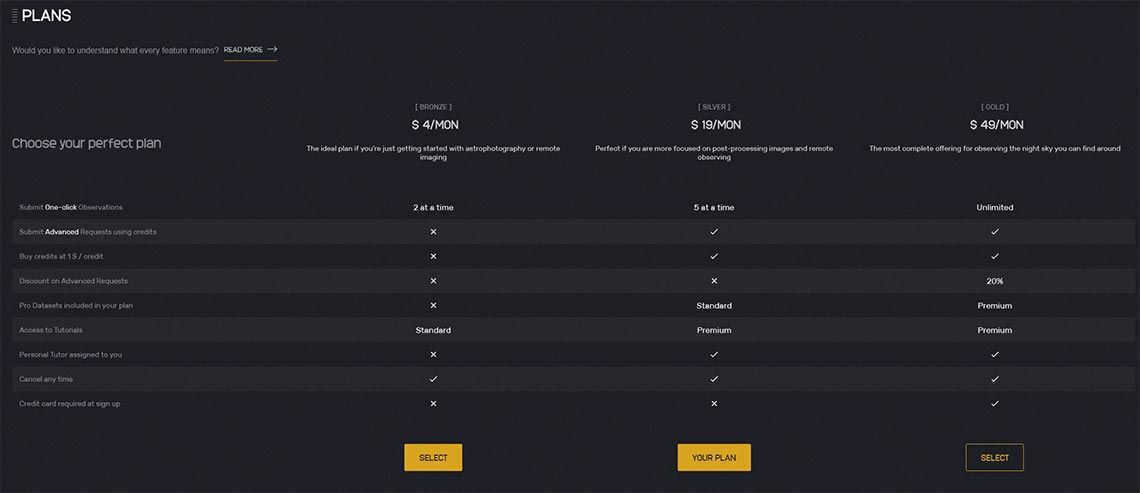
Instances of individual paid inquiries:
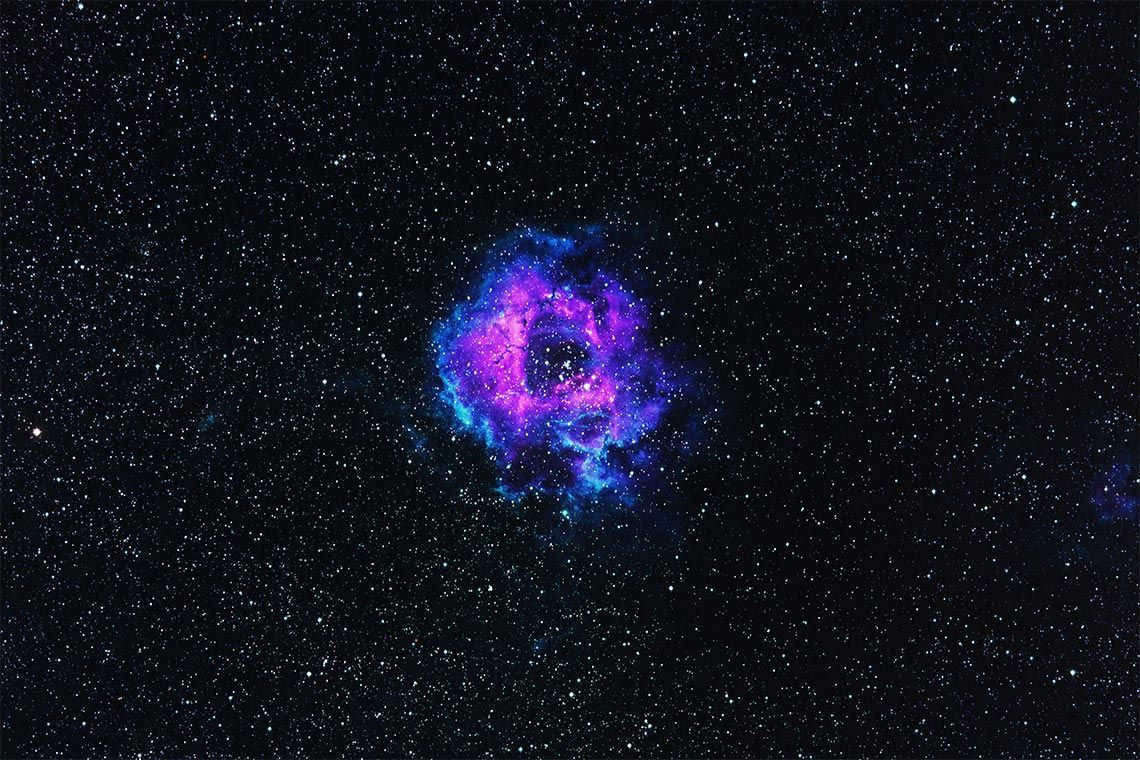
- One can observe celestial objects in the solar system or deep space by their given name or coordinates;
- It is possible to choose any telescope for observation (by default, the observatory provides a selection of telescopes);
- The filter set and exposure can be adjusted;
- The order of observation can be automated;
- One has the ability to specify the exact start time for observation or modify any online telescope settings.
Limitations of free access
- Free access to single observatories for observing or astrophotography;
- Restrictions on the number of observing objects (from 1 per session to 5-6 single objects);
- Inability to adjust telescope settings, unless you submit a request for educational purposes, which can take anywhere from a few days to several months for approval;
- Limited source resolution. Not applicable to all platforms. For instance, when utilizing any online telescope at Telescope.live, you can obtain high-quality images even during the trial period;
- License limitations. Some websites allow you to use images for any purpose, while others only permit publishing photos for illustrative purposes;
- Reduced opportunities for experimentation;
- Waiting time for your turn to observe.
Are paid rates more advantageous?
If your focus is on post-processing rather than shooting, you have the option of sticking with standard rates or utilizing free telescopes with remote access. However, paid plans and customized requests are available for individuals seeking the optimal results through personal setup.

Advantages of Remote Astrophotography
- Observing the universe through a telescope online allows for remote participation;
- There are presets available that facilitate post-processing;
- Remote access to telescopes enables simultaneous observation of multiple celestial objects from different locations around the world;
- You can enjoy the wonders of the cosmos for free or at a minimal cost (starting from $20 per month – significantly less than the expenses associated with professional astrophotography equipment);
- Default settings provide protection against errors and prevent undesirable outcomes;
- By collaborating with observatories, you can create a budget-friendly version of the equipment you utilize.
- SOHO (real-time observation of the sun);
- Explore the world with the worldwidetelescope virtual tours;
- Simulate the experience of using a telescope;
- Discover a vast collection of images captured by the Hubble telescope on NASA’s website;
- Interact with an interactive map that showcases the beauty of the night sky;
- Watch the live feed from the ISS camera;
- Enjoy recorded videos from the International Space Station;
- Explore constellations, the Solar System, and stunning images from the Hubble telescope on Google Sky (a great alternative to live telescope observation if you’re interested in admiring the cosmos through archival photos);
- Marvel at the top 100 photos captured by the Hubble telescope;
- Get a visual model of the future of the Milky Way with the viewspace forecasting;
- Watch NASA’s online streamings, which started in 2018 and 2019 (featuring constantly updated recordings from NASA TV);
- Visit a website to see real-time observations made by the Hubble telescope (includes sample images with names and coordinates).
Top remote astrophotography websites in 2021
In my viewpoint, the most convenient platform for remotely observing nebulae, galaxies, and other deep space objects is Telescope.live. It is marketed as the most cost-effective astrophotography website globally, and this claim is easy to believe. The trial subscription offers instant access to professional datasets in high resolution or the option to use the telescope online without any limitations on basic functionality.
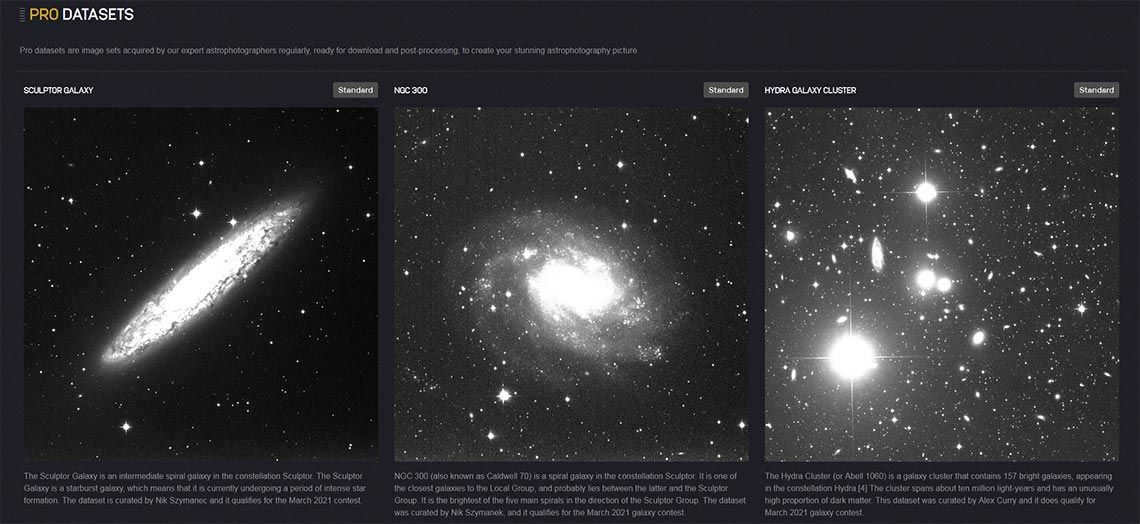
The portal is well-organized, making it easy to comprehend everything without the need for specific guides. Additionally, there are training materials available, ranging from the fundamentals of navigating the site to post-processing astrophotos. Upon registration, users gain access to nine telescopes situated in three different countries: Australia, Spain, and Chile. They also have the opportunity to share their photos on the dedicated forum or participate in contests with prize funds ranging from $500 to $1500.
The cost of a basic subscription is approximately $20 per month. Fortunately, there is a trial period of one month, which offers ample time to familiarize oneself with the features of Telescope.live. In my opinion, if you have the financial means, it is preferable to opt for a premium subscription at $50 per month as it removes any limitations on the number of observations. Otherwise, you will be restricted to using no more than five remote access telescopes concurrently.
When you select a remote access telescope on this platform, you will receive:
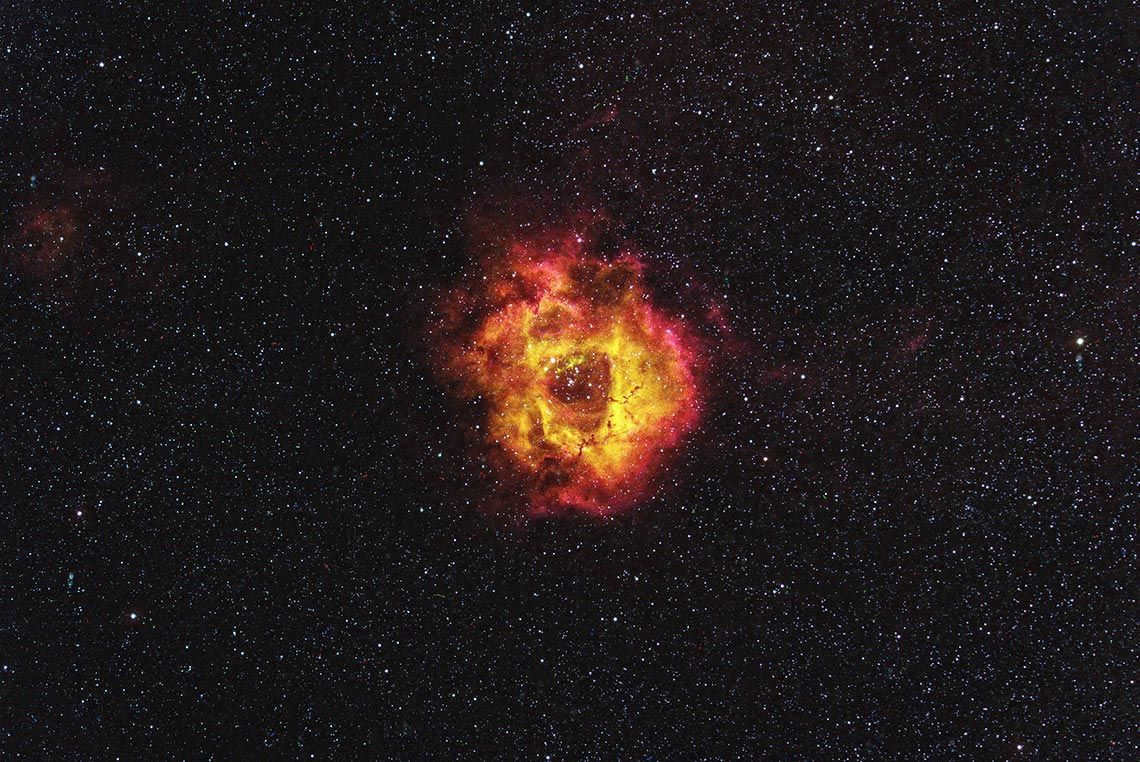
- Get high-resolution images without any loss in picture quality;
- Gain access to professional-grade equipment in areas with minimal light pollution;
- Experience a user-friendly interface and convenient features;
- Take advantage of the preview option to see what you’ll be capturing;
- View examples of images with automatic processing (you can either use them as they are or customize them to your liking).
MicroObservatory is the second most convenient website for real-time space observation.
MicroObservatory offers a network of robotic telescopes that enable users to observe nebulae, galaxies, and individual solar system objects. Users can also select filters, exposure times, and viewing angles. The website is completely free and does not require registration. To access the features, users simply need to provide their email address (which is necessary for receiving the sources via email) and minimal personal information.
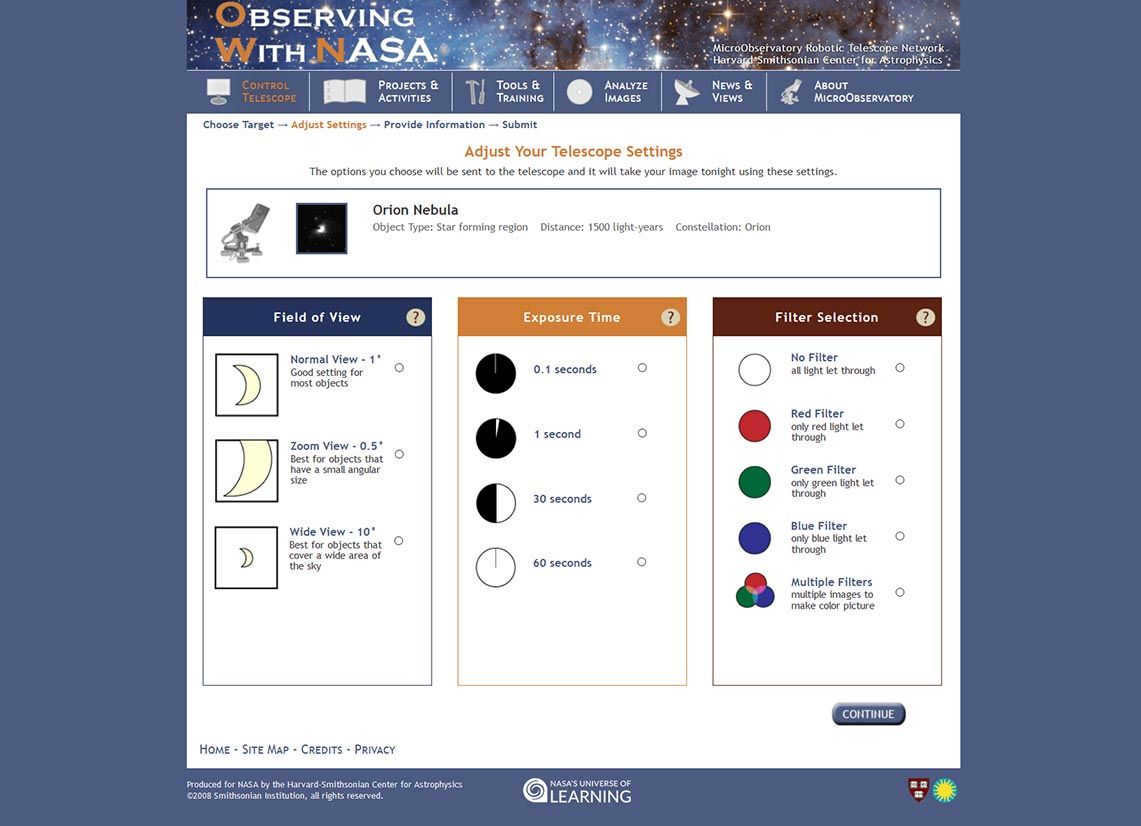
Although we would like to give the first place to the micro observatory service due to its customization and complete free of charge, there are significant drawbacks to consider. One major disadvantage is the uncertainty surrounding the quality of the images produced by the online telescope. The picture quality can vary from observation to observation, making it unsuitable for professional astrophotography. Another drawback is the limited resolution of the images, which can make it challenging to achieve high-quality results even with a good source. While it is possible to enhance the images using neural networks, one must question whether it is worth the effort.

Utilizing online telescopes is possible on various platforms, but I highly suggest starting with Telescope.live. It offers a month of trial access without the need for credit card details, top-notch hardware, advanced features, and a user-friendly interface, which makes it quite convenient for both beginners and experts.
For professionals, I recommend exploring all the websites mentioned in the list. Certain resources, such as RoboScopes, provide the capability to adjust the telescope settings online, select filters, specify the total exposure time, and input the coordinates of the object of interest. However, this option comes at a higher cost, starting from $20 per hour.
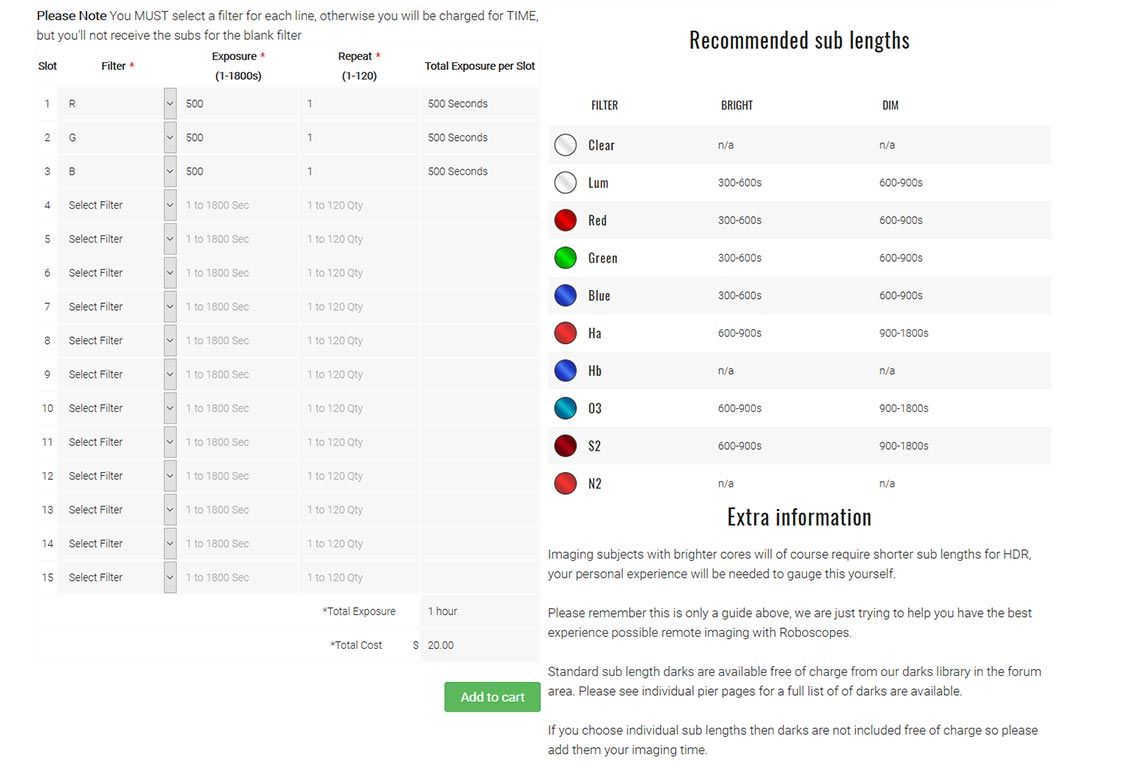
What is the process of utilizing Telescope.live?
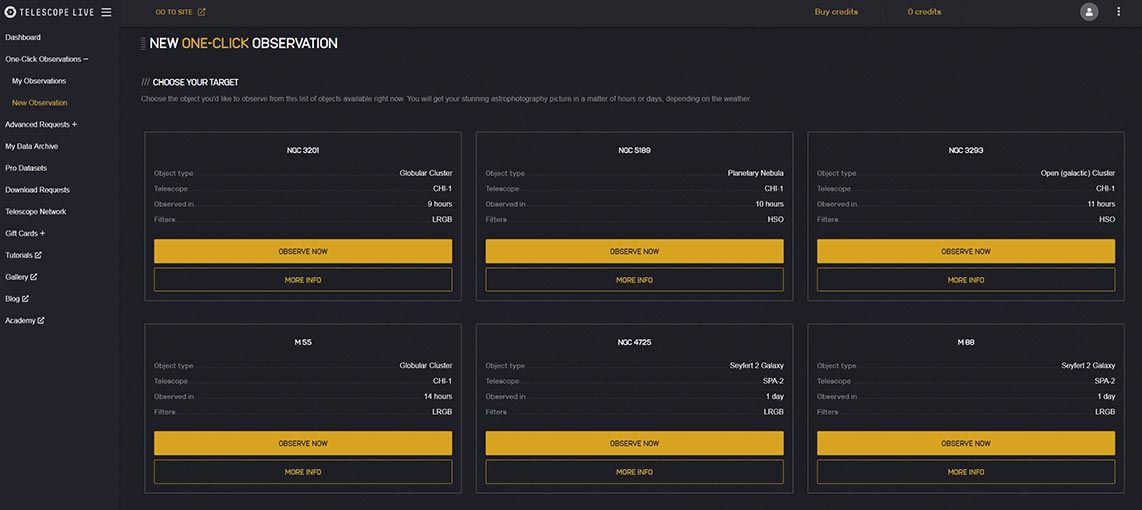
- Sign up on the website;
- To utilize the online telescope, simply click on “One Click Observation”, then “New Observation” and choose the objects you wish to observe;
- After the observation is finished, navigate to “My Observation”, click on “More info” below the image, and then either download the image or view the original data. I suggest opting for the latter option;
- If you select the sources, you will be directed to the “My data archive” section where you can download them. You can either select all the sources (located in the upper left corner) or choose specific ones, and then click on the “Download” button. This action will initiate a request to create an archive;
- You can find information about the processing of astrophotographs taken at the observatory using remote access in Russian by following the link provided at the end of this article. Alternatively, registered users can access a step-by-step video tutorial in English.
Did you find this article helpful? Feel free to share it with your friends, leave comments, and subscribe to our Telegram, Boosty, and other social media pages to stay up to date with all the latest news and interesting content!
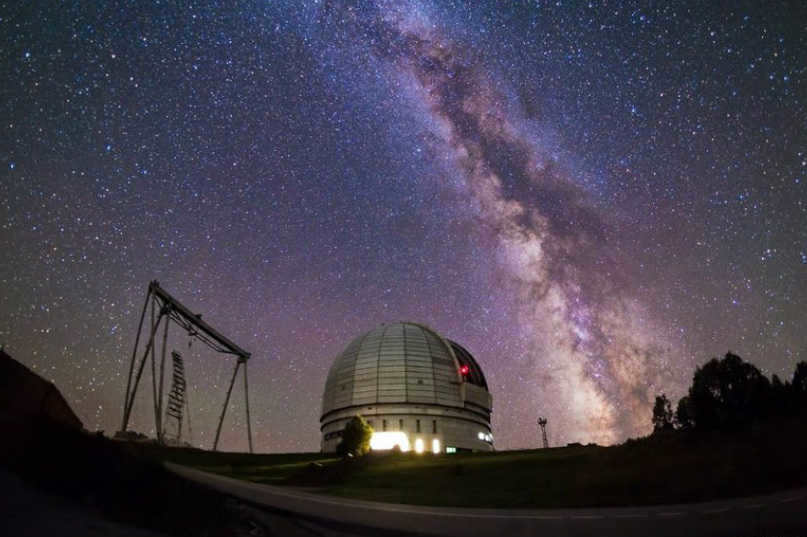
Not just astronomy enthusiasts, but also regular individuals, have a desire to own their own telescope. However, not everyone has the means to do so. Nowadays, there are numerous platforms that offer the opportunity to observe through a telescope online. For those who appreciate the breathtaking beauty of the starry sky and have admired cosmic imagery in photographs, I regret to inform you that the view through a telescope, even a powerful one, will appear vastly different.
All the stunning space photographs that we see are captured through long exposure, so if you are observing online, you may find yourself slightly disappointed.
There is a celestial webcam available that provides the opportunity to observe fascinating astronomical phenomena such as the Sun, Moon, planets, and eclipses.
These observations are conducted at the Roque Saucillo Astronomical Center in Spain.
Caution. In the event that no celestial objects are visible, the display will present the latest observation results or announce the upcoming ones. –>
Watching the Telescope
There is another fascinating feature available – a webcam positioned near the BTA telescope in Zelenchukskaya village, home to Russia’s largest 6-meter optical device. The webcam provides a live feed of the ongoing observations, allowing viewers to witness the telescope in action.
Important Note: If you encounter a white background instead of the live stream, please consider disabling any ad-blocking software, such as AdBlock, or simply be patient and wait for the feed to load.
The Hubble Telescope
It’s likely that you’re familiar with the Hubble Space Telescope, which orbits the Earth and frequently transmits incredible photographs of the solar system and outer space.
Available Resources
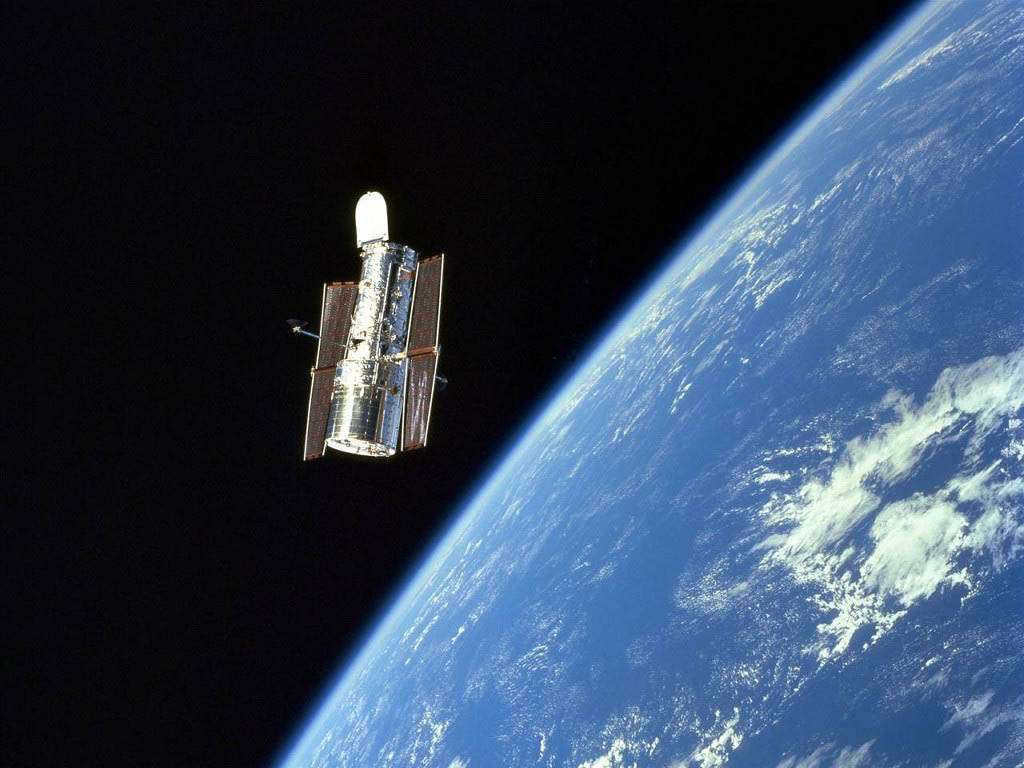
Many individuals have wondered where they can observe the Hubble telescope in real time. Unfortunately, at present, this is not possible.
All of the images sent by Hubble are captured with extensive exposure times and often require weeks to obtain.
As a result, it is not feasible to view the Hubble telescope online. However, there is a paid resource called slooh.com that provides the opportunity to observe interesting events, such as the passage of an asteroid or comet, in real time. The only drawback to this project is that it requires a payment. Nevertheless, it is important to consider that astronomical observations are not a cheap pleasure, and online optical instruments are even more expensive.
Did you enjoy the article? Share it with your friends!

Amateur stargazers are familiar with the experience of gazing at the stars in the night sky and pondering what is happening up there. This was one of my childhood dreams. Despite eventually managing to save up enough money to purchase my own telescope, it never quite lived up to my initial desires. It could be due to the limited magnification of this budget telescope or my own limitations as an amateur astronomer in taking things to the next level.
Acquiring a truly exceptional telescope remains a distant possibility. Magnification is no longer a major concern; the skies are always more polluted. However, thanks to the integration of modern web technology with advanced imaging capabilities, we now have the next best thing – “telescopes in the browser”.
Virtual or online telescopes do not require complex configurations. All you need is a web browser. The reassuring aspect is that although they may not be traditional telescopes, they offer a much higher level of interactivity compared to their physical counterparts.
Google Sky
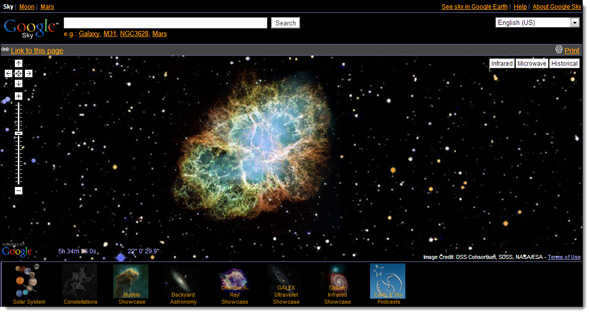
Suggestion. According to Google, you have the option to observe the cosmos through various wavelengths, allowing you to visualize what it might appear like if our eyes were capable of perceiving X-rays or infrared. While navigating through these alternate perspectives, experiment with adjusting the transparency to seamlessly transition between different wavelengths, revealing how distinct areas of the universe illuminate at varying wavelengths.
MicroObservatory Robotic Telescope Network (NASA)
The MicroObservatory Robotic Telescope Network, which is operated by NASA, offers a unique opportunity for individuals to remotely control telescopes and capture images of the night sky. With the click of a button, users can access these powerful telescopes and explore the wonders of the universe.
The MicroObservatory is a network of automated telescopes that are located at various sites around the world. These telescopes are equipped with cameras that can capture stunning, high-resolution images of celestial objects. Users can choose from a variety of targets, including planets, galaxies, and nebulae, and then control the telescopes to capture images of their chosen objects.
One of the advantages of the MicroObservatory is its accessibility. Users do not need to have any previous experience with telescopes or astronomy to use the system. The user-friendly interface makes it easy for anyone to navigate the software and control the telescopes. Whether you are a seasoned astronomer or a beginner with a curiosity for the night sky, the MicroObservatory is a tool that can be enjoyed by all.
In addition to its accessibility, the MicroObservatory also offers a wealth of educational resources. The website provides tutorials and lesson plans that can be used by teachers and students to incorporate the telescope network into their curriculum. By using the MicroObservatory, students can gain hands-on experience in astronomy and learn about the scientific principles behind the images they capture.
The MicroObservatory Robotic Telescope Network is a fascinating project that brings the wonders of the universe to people around the world. Whether you are a casual observer or a dedicated astronomer, this network of telescopes offers an exciting opportunity to explore the mysteries of the cosmos. So, why not take a journey into the night sky and see what wonders await?
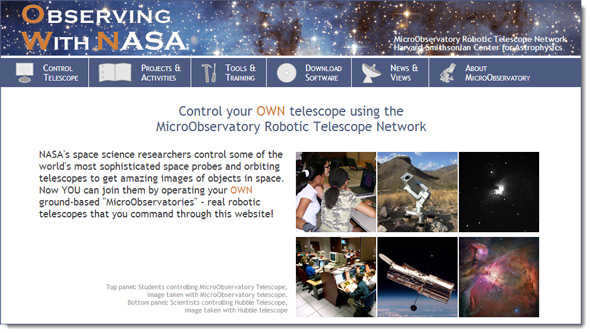
Sip of Words is an educational project led by scientists and faculty members at the Harvard-Smithsonian Center for Astrophysics. The Observe with NASA website, which aims to make astronomy more accessible to students and enthusiasts globally, is created and supported by NASA. To facilitate remote monitoring, a network of automated reflecting telescopes with a 6-inch diameter, known as Maxuths, is available for use via the internet. These telescopes are situated in Cambridge, Massachusetts, and Amado, Arizona.
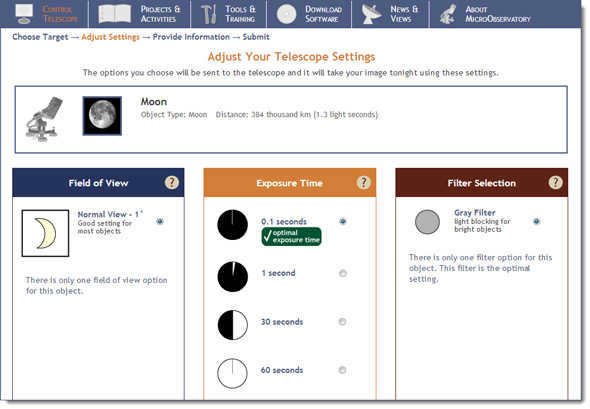
Users have the ability to manipulate the telescope by adjusting a few settings on a webpage, such as the target, exposure time, and filters to be applied. Once they have made their selections, they can submit their requests to the website. Within the next day (or at most 48 hours), an email will be sent to you containing a link to download an interactive image from the observatory. While you wait for the image to finish downloading, you can pass the time by browsing through the catalog of previously captured images.
Suggestion. If you prefer, you can also choose to download high-resolution images from the catalog or even capture your own. Afterward, you can utilize the free software, MicroObservatory Image 2.2, to enhance and further manipulate the image according to your preferences.
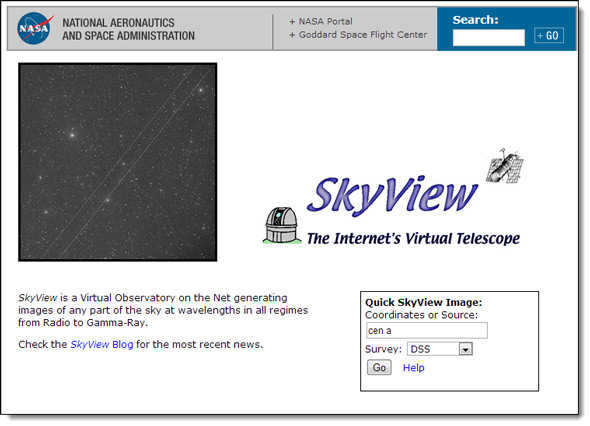
We are left with NASA and another interface for observing space. SkyView is not a telescope, but it allows amateur astronomers to view the universe through their web browsers. It is described as a virtual observatory. SkyView grants amateur astronomers the ability to request images from various space surveys. However, only static images taken from fixed points in space can be retrieved, not images of planets, comets, satellites, etc. To use SkyView, simply enter the name of a celestial object or a set of equatorial sky coordinates, and then select one of the 5 surveys from the drop-down menu.
Recommended – y SkyView offers a simplified page for non-astronomers that explains how to utilize its full potential.
Global Telescope
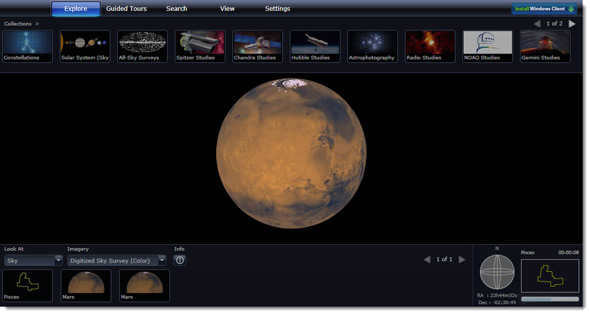
The suggestion is to. choose and participate in audio-video tours, which can be very helpful if you are new to astronomy. Make sure to open the browser in full screen mode.
There are, of course, more than just four online space observatories or telescopes available. However, these four are completely free. You have the option to utilize the excellent SLOOH Space Camera and iTelescope.Net (which offers a free trial) with paid membership plans. Additionally, you can explore six other fascinating websites that any space and astronomy enthusiast should visit. It is now as simple as clicking a mouse without leaving your seat to learn about space exploration, which was once inaccessible. Astronomy websites contribute to the pool of knowledge.
If you are an amateur astronomer or simply have an interest in space science, how can you satisfy your curiosity? Have you ever used any of these online telescopes before?
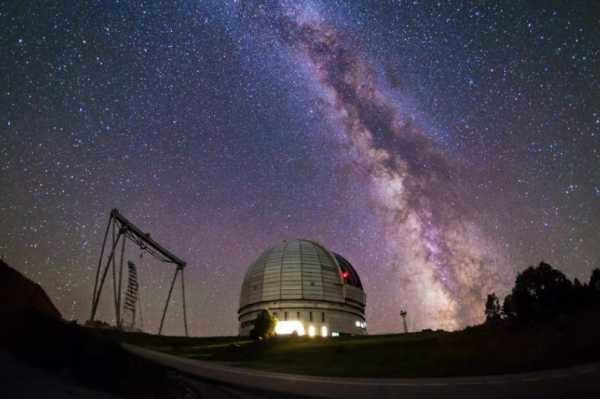
Not just astronomy enthusiasts, but regular individuals as well, have a desire to possess their own telescope. However, not everyone has the means to do so. Nowadays, there are numerous resources available that allow individuals to explore the telescope online. If you have a passion for the magnificent starry sky and have witnessed the splendor of the universe through photographs, I must inform you that the image you see through a telescope, even the most powerful one, will be completely different.
All the breathtaking photos of the cosmos are captured through long exposure techniques, so if you view them online, you might be slightly disappointed.
There is a fantastic astro webcam available for observing fascinating astronomical events, as well as the mesmerizing Sun, Moon, planets, and captivating eclipses.
These observations occur at the esteemed Centro Astronomico Roque Saucillo observatory in Spain.
Observing through the Telescope
Another intriguing service is provided by a webcam situated near the BTA telescope in the village of Zelenchukskaya, home to Russia’s largest 6-meter optical instrument. The webcam offers a firsthand view of the observation process, allowing you to witness it in action.
Attention: If you encounter a white background instead of a live stream, kindly consider disabling ad-blocking programs like AdBlock or exercise patience until the stream starts.
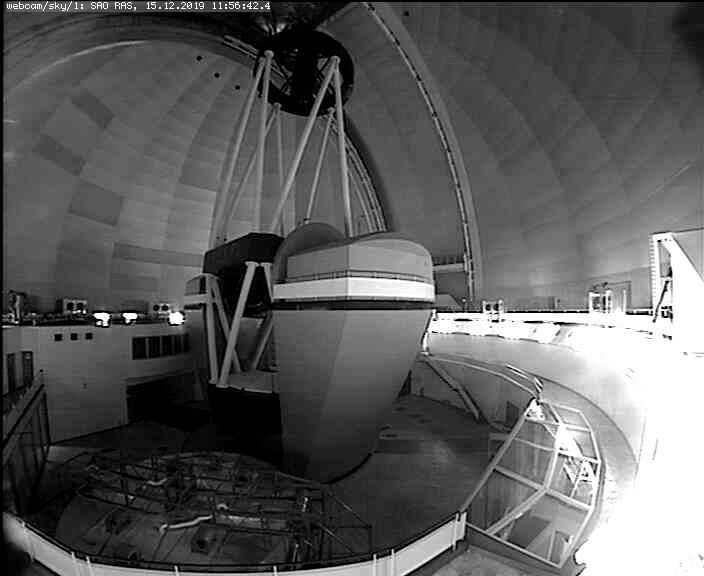
The Hubble Telescope
Undoubtedly, you must be familiar with the Hubble Space Telescope, renowned for its consistent delivery of breathtaking images of both the solar system and the vast expanse of deep space.
Additional Resources

The Edwin Hubble Orbiting Telescope
Many people often wonder where they can view the Edwin Hubble Orbiting Telescope in real-time. Unfortunately, this is currently not possible.
All the images captured by the Hubble Telescope are taken with a significant exposure time and often span over several weeks.
Therefore, it is not feasible to view the Hubble Telescope online. However, there is a paid resource called slooh.com that offers the opportunity to observe real-time events such as the passage of asteroids or comets. The only downside to this project is that it requires payment. It is important to note that astronomical observations are not a cheap hobby, and accessing optical instruments online is even more costly.
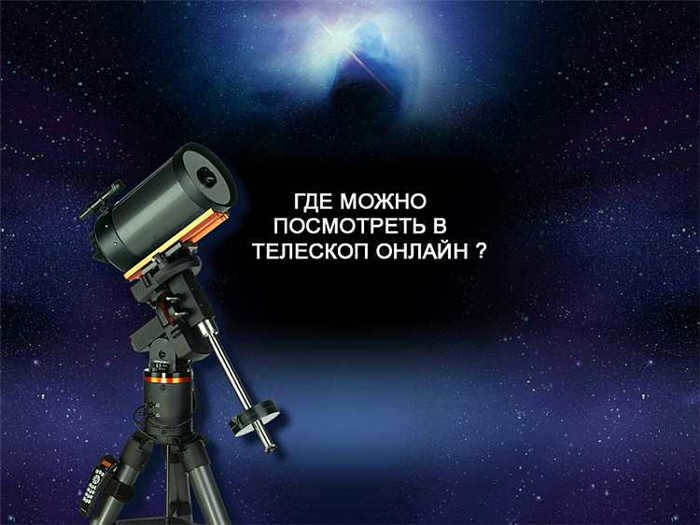
Welcome to the incredible online telescope project, which is an incredibly powerful collection of actual, automated devices that are connected to the Internet!
When the telescope is not actively observing, you can find information about exciting upcoming events that will soon be visible here.
Both professionals and astronomy enthusiasts will be astounded by this remarkable instrument, making the virtual telescope one of the most esteemed in the world with a renowned reputation.
What you can expect from online observation
No matter your level of expertise, the Virtual Telescope will bring the universe within reach, allowing you to view authentic images of the starry sky. This remarkable tool has been operational since 2006 and is ready to fulfill your passion for the cosmos!
What to watch along with
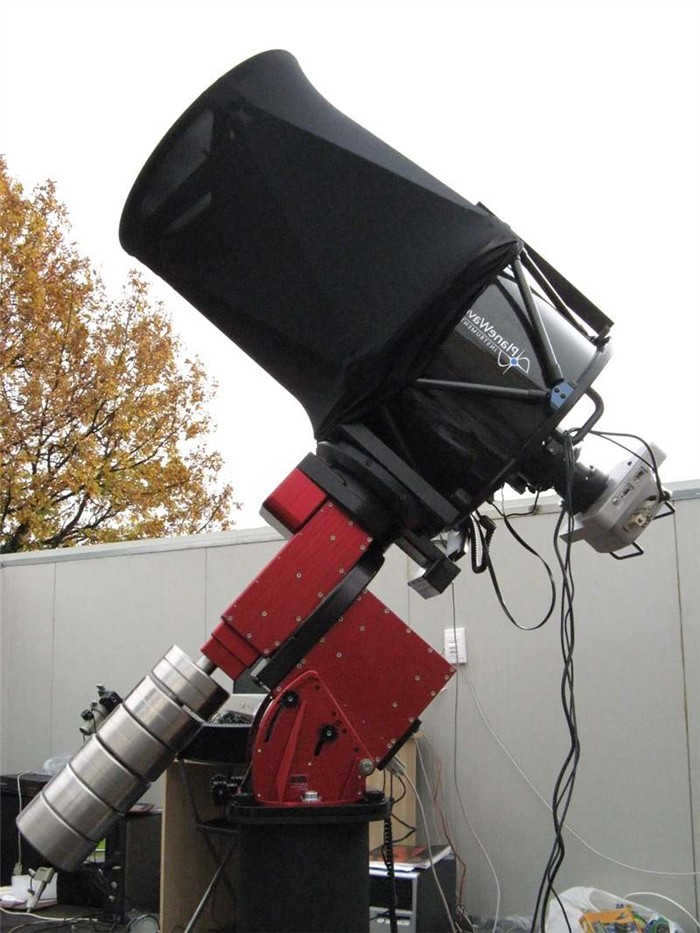
The primary tools in use include the Planewave 17″ – f/6.8 (432/2939 mm) equipped with the SBIG STL-6303E sensor.
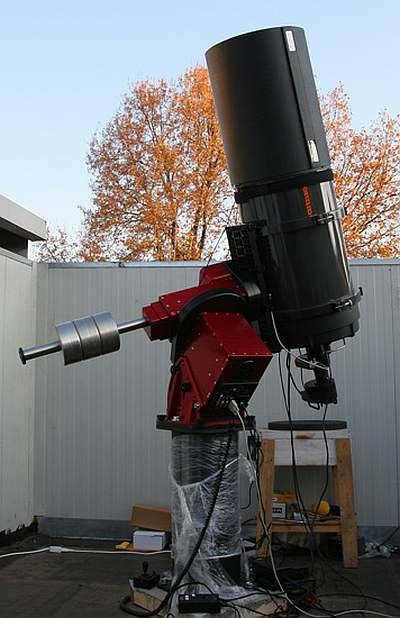
Furthermore, if you do not possess a telescope, fret not! It is not an issue at all.
There is no need to worry about not having a telescope!
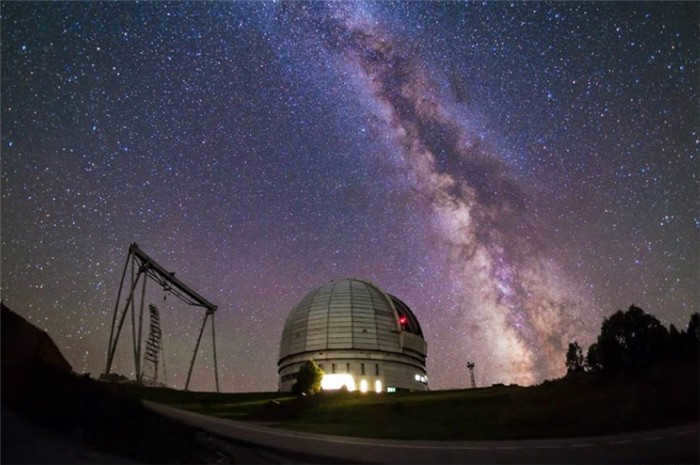
Not only astronomy enthusiasts, but also regular individuals, have a desire to possess their own telescope. However, not everyone has the means to do so. Nowadays, there are numerous platforms that allow individuals to observe through a telescope online. If you have a passion for the breathtaking starry sky and have witnessed the splendor of the cosmos in photographs, I must disappoint you by saying that the view through a telescope, even the most advanced one, will appear completely different.
All the most stunning photographs of the cosmos are captured through long exposure, so if you view them online, you may experience a slight sense of disappointment.
Experience the wonders of the cosmos with the incredible astro webcam, offering a unique opportunity to witness captivating astronomical phenomena, including mesmerizing views of the Sun, Moon, planets, and eclipses.
Immerse yourself in the celestial world as you tune into the live observations taking place at the esteemed Centro Astronomico Roque Saucillo observatory in Spain.
Caution: In the event that there are no celestial objects currently visible, the webcam will display the results of the previous observations or provide information about upcoming celestial events. ->
Observing the telescope
A fascinating service available is a live web camera located near the BTA telescope in the village of Zelenchukskaya, which houses the largest 6-meter optical instrument in Russia. The webcam provides a direct view of the ongoing observations and allows viewers to witness the telescope in action.
Important Note: If you encounter a white background instead of the live broadcast, please consider disabling any ad-blocking software such as AdBlock or simply wait for the stream to load.
Hubble Space Telescope
Most likely, you are familiar with the Hubble Space Telescope, a remarkable device that consistently transmits breathtaking photographs of our solar system and the vast expanse of the universe.
Additional Resources
Edwin Hubble’s Revolutionary Orbiting Telescope

Many individuals often wonder where they can view it in real time, but unfortunately, this is currently not feasible.
All of the images transmitted by the Hubble telescope are captured with an extensive exposure time and frequently require weeks to obtain.
As a result, it is not possible to observe the Hubble telescope online. However, there is no need to be disheartened as there is a paid resource known as slooh.com, which provides the opportunity to observe interesting events, such as the passage of an asteroid or comet, in real time. The only drawback of this project is that it requires payment. Nevertheless, it is important to consider that astronomical observations are not an inexpensive pleasure, and accessing optical instruments online is even more costly.
Enjoyed this article? Share it with your friends!
Discover Ten Creative Ways to Utilize an Old Computer
Ever wonder what to do with your outdated computer?
We have compiled a list of 10 innovative ways to repurpose them: from transforming them into a home server or media center to selling them piece by piece or incorporating them as a unique design element.
With the constant decrease in prices of more advanced computers, older models like the 300 MHz Pentium II are often left unused.
While these computers may no longer support updates, they still hold potential limited only by the owner’s creativity.
Kitchen computer
A computer in the kitchen – An excellent tool for discovering recipes and enjoying streaming audio while preparing meals. It’s a fantastic option for utilizing an old tablet computer, laptop, or even a desktop computer if you have enough space on the countertop and long cords to connect it.
Simply clean the computer and start fresh by installing a basic operating system. After that, add some apps like AllRecipes for recipe searching, Calibre for managing electronic cookbooks, and some audio apps for listening to podcasts.
An excellent choice for this scenario would be using a vintage tablet equipped with these applications and a pair of Bluetooth speakers. Simply connect the tablet to a power source, position it securely (possibly utilizing an old stand if available), and place affordable Bluetooth speakers in the kitchen, ensuring that they are always connected to the tablet. Activate your music player or podcast app and increase the volume in the kitchen, then proceed to search for a recipe. Set the tablet aside so that you can easily refer to the recipe while cooking, all while relishing in the pleasant audio streaming from the tablet.
Trade in your old components for new ones
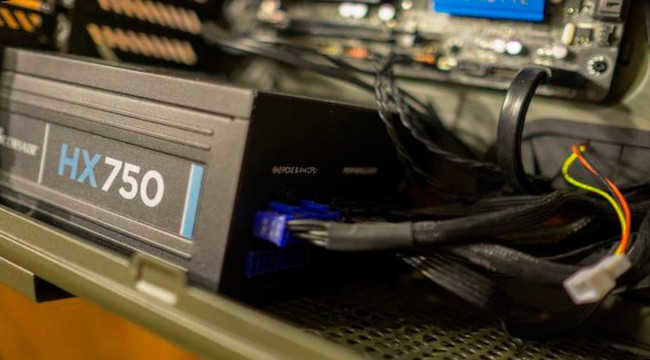
Before you begin adding any new items to your shopping list, it is important to assess your current setup. Take a look at your power supply and ensure that it is capable of providing sufficient voltage to keep all your components running smoothly and without any stability issues. Additionally, it is advisable to have a power supply that is rated 80 Plus Bronze or higher. If these conditions are met, there is a good chance that you can continue using your current power supply. In general, a reliable 500 watt power supply should be more than capable of powering a single video card.
However, if you plan on installing a more power-hungry component, such as a GeForce RTX 2080 Ti or an RX Vega 64, it is recommended that you upgrade your power supply to at least 600W. Similarly, if you intend to add another graphics card in SLI or CrossFire, you will need a power supply with a wattage between 850W and 1000W – keep in mind that this wattage may need to be higher depending on the specific cards you are using, especially if you plan on overclocking.

Another concern that arises when upgrading is whether the graphics card will fit properly inside the computer case. Take measurements to ensure that there are no conflicts with your existing drives or front fans. If there are any issues, make sure to include the new item on your shopping list. If you are already planning to replace your motherboard, it might be a good idea to keep the old components in place and install all new components in a larger case.
Preserve whatever you can. Hard drives and SSDs can be effortlessly transferred to another computer if they are not sluggish or occupy minimal space. The same applies to coolers and fans if your intention is to completely dismantle an old system for spare components. These are generally interexchangeable parts that should function with a new processor or in a new case, as their sizes and shapes are standardized.
If you are prepared to let go of your outdated components, do not simply discard them. Instead, sell them on AliExpress or Avito to help cover the cost of a new computer.
advertisement
If you happen to have an old-fashioned CRT TV at your cottage or for the kids, having a video card with a TV output like the one shown above can be incredibly useful. While the picture quality may not be as sharp as VGA, it is still acceptable. I once connected a computer like this for an entire summer.
To make the connection, you will need a composite cable like this one.
Alternatively, you can opt for a VGA to S-Video 3 RCA converter cable.
Regardless of the option you choose, solving the connection issue is quite simple. Moreover, it is likely easier to find a video card with the appropriate connectors.
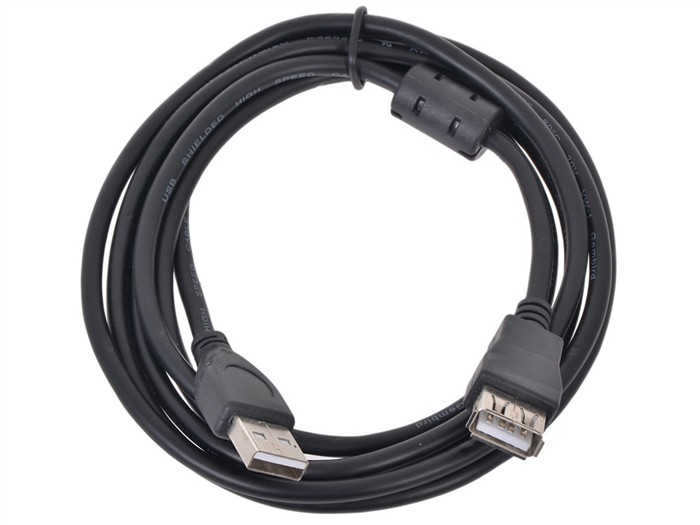
Now let’s talk about control. If you have a cottage, you can easily connect a keyboard and mouse using USB cables. There’s no need to worry about the length of the cables, as a 1.8-meter cable is enough for a comfortable setup.
If you live in an apartment, it’s better to invest in an affordable wireless mouse and keyboard. Personally, I like to sit in my armchair in front of the TV, placing the keyboard on my lap and using the mouse on the armrest. It works perfectly for me. Playing CS 1.6 might be a bit challenging, but overall, it’s excellent.
You can find mice starting from 270 rubles and keyboards starting from 600 rubles. If you’re looking for a set of both keyboard and mouse, you can find them starting from 700 rubles.

An affordable wired gamepad for only 240 rubles is also compatible with this computer.
I have selected choice number 3
Rusonix is a hosting provider that has been in operation for 13 years. We have a sufficient amount of older, yet fully functional equipment. Our team is consistently working on increasing the density of our server racks, ensuring that outdated, power-consuming, and overheating servers are not kept in our data center. It would be a waste to dispose of perfectly working hardware, selling it is too problematic, and it simply isn’t worth the time and effort.
After consulting with my colleagues, I have made the decision to choose the last option out of the three available. I believe that the positives outweigh the negatives. During our council meeting, we collectively decided to donate our old hardware to those who are in need for their business purposes. Our goal is to ensure that these servers will continue to serve someone for many more years to come. This is how the Orangeman community initiative came to be. And thus, the story that you are familiar with, regarding the distribution of servers and other hardware, began to unfold.
Throughout the process of giving away these servers and other hardware, it became evident that many other enthusiasts in different companies had the same question as myself – where should they place their old hardware? This led me to the decision to share my own experiences and discuss the proper way to give equipment as a gift.
What can you do with an old computer?
If your computer is still functional but outdated, there are several ways you can repurpose it, especially for household use.
Most modern and even older computers have a decent sound card, which can be connected to speakers for audio playback. Additionally, many computer system units come equipped with CD/DVD readers/writers, allowing you to use the computer as a CD/DVD player.
However, it’s important to note that control of the CD/DVD player will need to be done using a mouse instead of a remote control.
Check out our latest articles for troubleshooting tips, such as fixing errors when working with shortcuts or dealing with objects that have been changed or moved.
Controlling with a mouse is not always convenient because it requires a connection to the system unit port, typically via a USB port. This means that the mouse cannot be used at a distance longer than the length of the connecting wire. Additionally, using a mouse requires a surface to “drive” it on, which is not always convenient, such as when sitting on a sofa.
To avoid these inconveniences, you can connect a wireless mouse to the PC system unit or use a more advanced device like the ones used by speakers to present their presentations.
A wireless mouse still functions like a traditional mouse, requiring movement on a surface. However, a remote control device can be used by holding it in your hands like a regular remote control.
Both the wireless mouse and the remote control device are composed of two components. One component is fixed and typically connected to a USB port. The other component is the actual device, which is powered by batteries or rechargeable batteries and is used by the user for control.
Try out a fresh, lightweight operating system
Do you enjoy experimenting with new things? Nothing will be more novel than installing a new operating system on your old PC – even an entirely outdated computer will feel like it’s brand new.
If you’re looking to transform your old man into a gaming machine, why not give SteamOS a try? SteamOS is a specialized version of Linux that is specifically designed for running games purchased and downloaded from the Steam platform. However, it’s important to note that not all Steam games are compatible with SteamOS due to its Linux-based nature. To ensure compatibility, your computer will need to meet certain requirements, including a 64-bit Intel or AMD processor, 4GB of RAM, a 200GB hard drive, and at least the minimum Intel, Nvidia, or AMD graphics necessary for running SteamOS.
Simply tossing a computer or laptop into a landfill is not only wasteful but also foolish. Instead of letting that old laptop rot away in a dumpster, consider alternative options that can benefit both the previous owner and the environment.
There are several ways to handle electronic equipment like this:
- Donate it to someone in need.
- Sell it for parts.
- Recycle it responsibly.
- Take it to a local scrap yard.





